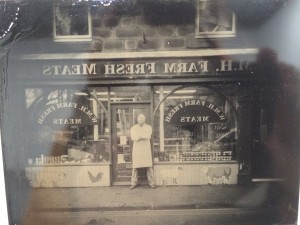Blog by Alison Raimes, Project coordinator The Whistle Art Stop
Portraiture has served the art world well over the centuries providing us with an insight into the social and political context in which they were made. We can map time and place through snapshots across eras and today the Internet is saturated with narcissistic images of ourselves (selfies) and of mundane, everyday shots of everyday objects giving a whole new look into “our world”. Selfies are the artistic expression of today with the equipment to snap away at the touch of a smart phone. Everyone is now a photographer.
So how can a contemporary photographer stand outside of that norm and be significant within the socio/political climate of the ‘now’? Is it possible to reinvent the genre of portrait photography in the sea of selfies without aspiring too greatly to nostalgia? Or should we embrace nostalgia through portraits? Those are the questions we asked Michele Selway when she applied to do a residency as part of our Graduate Art Programme at the Whistle Art Stop.
“I am interested in the presentational form of a photograph and it’s collaboration with the materiality of the image. These areas of investigation have been at the core of my work over the past three years and were essential to the development of my work this year. Through these themes I have been experimenting with alternative and 19th century photography, specialising in Wet Plate Collodion. I have been inspired by the interesting correlation between the powerful factors affecting the landscape (time/erosion/natural factors) and the effect that the 19th century processes that I am working with alter/influence the images.”
The process: Wet plate collodion was the main method of photography between 1851 and around 1870, discovered by Frederick Scott Archer. It involves flowing a sticky substance called collodion over either a piece of tin or glass, which is then sensitized in silver nitrate. The plate is then exposed, developed, fixed and then protected with a lavender varnish. It has to be damp all the way through the process otherwise it loses it’s sensitivity. As the plates are made on tin or glass they are unique: there is no negative. This process engages the public in the history of photography and the process of development; we allow the public to view the magic in our dark room, as the image appears on the tin from negative to positive.
Haltwhistle, a small rural town in West Northumberland where industry used to thrive and farming and mining were at the core of town employment, it is now classed as a ‘deprived’ area with low income and often-low aspirations. Yet there is a sense of belonging amongst the indigenous residents that is constantly throws back to the “good old days”. That’s part of the great attraction to incomers often seeking a slower, more leisurely pace of life.
Michele was embraced by the townspeople with huge enthusiasm for her project where they would become the subject and the audience. There was much amusement as she spilled her project out onto the streets and was often seen rushing back to her specially constructed dark room to process the plates. In terms of social engagement art, this project was right up there with the best. It broke down so many barriers and invited response from all sectors
of the community, not only in a documentary way but also in providing a sense of belonging to art that is often bewildering.
Of course, then there was the additional and very interesting factor of making people stay still for thirty seconds. Sounds easy, but in this day and age it is not. One slight distraction, one moment of forgetfulness and the image is destroyed. The clothes, haircuts, glasses, and objects they carried all marked the subjects in time, yet the process did not. Then the delicate processing of the images and the careful handling of the cameras. The week was not without it’s hiccups!
Michele rarely stayed still during this residency. She arrived like a new tornado sweeping fresh air and life into the cold and empty SHED, filling it with objects and images that were both curious and familiar to many and foreign to a lot. The young people embraced the idea of portraiture creating their own images, often staged, and then manipulating them to look old through the computer and the pen. So many people brought in gifts for Michele in the form of old photos they found in their collections, books and even cameras.
And so sadly, for now, we bid adieu and thanks to Michele and all her cameras and wish her great success and happiness. A special thanks go to Rob Halliburton who assisted her throughout the residency; to Alex for documenting the residency and to the Beacon Fire for refilling the fire extinguisher. Enough said!
Michele recently graduated from Stockport University Centre in Manchester partnered with Liverpool John Moores University, with a First in BA Hons Contemporary Photography. During January 2015, Michele was artist in residence at the Whistle Art Stop as part of the Arts Council England and Northumberland Arts Development funded Graduate Art Programme.
Follow The Whistle Art Stop Here.


